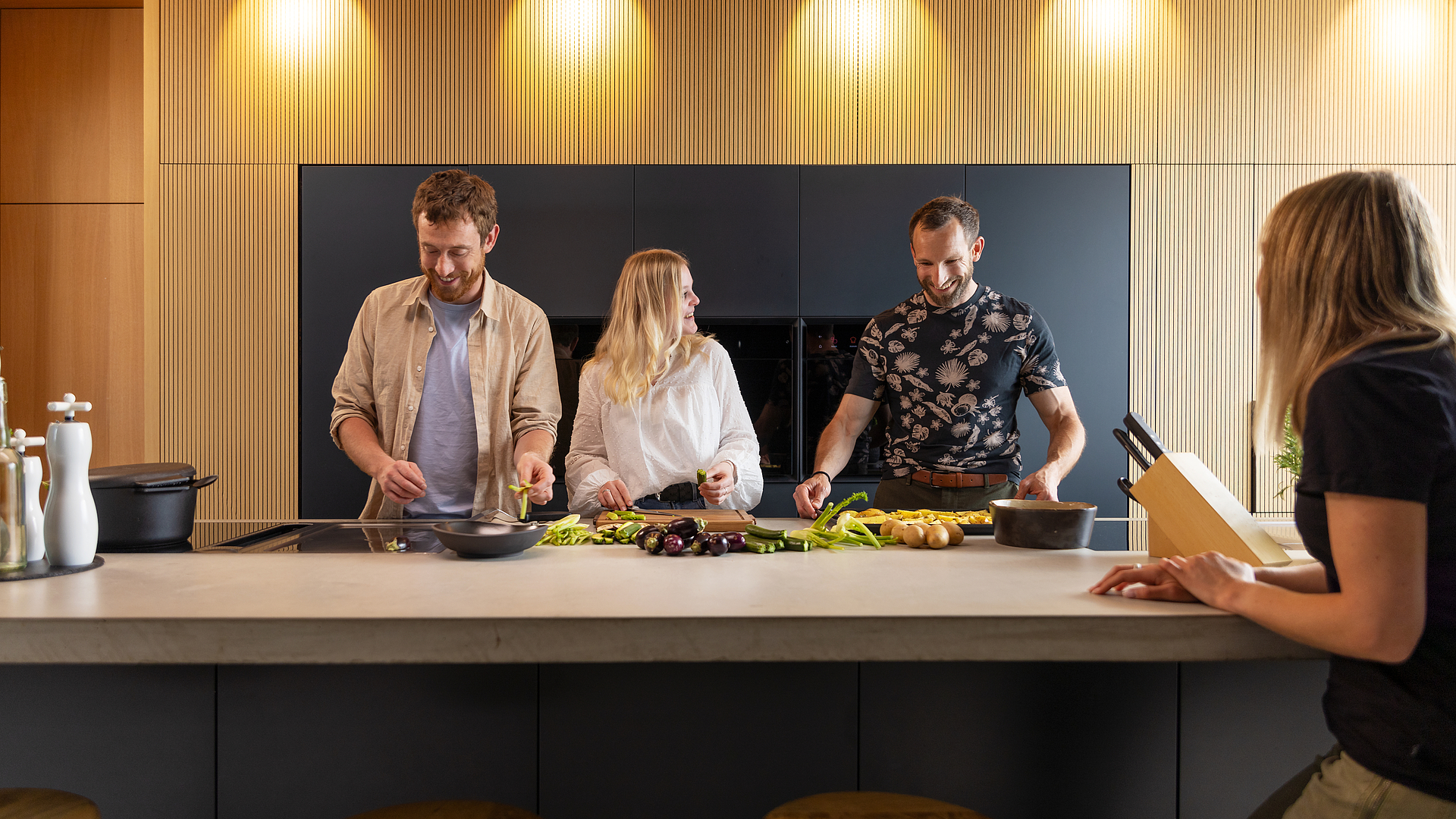
Let there be light – kitchen lighting
Whether you use natural lighting from outside or artificial light sources, designing the lighting in your kitchen calls for creative ideas and good planning. Find out everything you need to know about kitchen lighting and create a light concept that transforms your kitchen into a place of well-being.
The basics of kitchen light planning
When you build a kitchen, you shouldn’t overlook the lighting because light sources have a high functional, emotional and aesthetic value – from basic lighting (e.g. via dimmable ceiling spotlights) to accent lighting.
Functional lighting is particularly important in the kitchen, because areas where people work with knives and other sharp utensils need to be well lit. For this, you could use energy-saving LEDs beneath the cupboards and in the rail system between the worktop and wall units. Self-adhesive light strips are also very practical.
In integrated dining areas, the kitchen lighting takes on an emotional role – here atmospheric, subtle lighting is more important than detailed lighting. You could place a decorative ceiling lamp above the dining table to pleasantly brighten up the eating area without dazzling the people sitting around it.
Tip: dining table lamps should hang between 55 cm (minimum) and 70 cm (maximum) above the table top.
Warm white vs. cool white light in the kitchen
When planning the lighting in your kitchen, it’s not just a question of where to install the light sources, but also which colour temperature to use. The basic rule is that warm white light (2,700 to 3,000 Kelvin) has a calming and relaxing effect, whereas neutral to cool white light (3,300 to 5,300 Kelvin) is similar to daylight and therefore more suitable for functional lighting.
The lighting concept for your kitchen should include both warm white (to create an atmospheric and homely feel, particularly when having dinner together) and cool white (at breakfast time when there isn’t enough daylight). Neutral to cool white light also helps you to see clearly while you’re concentrating on snipping, washing and cooking. Kitchen lights should be positioned so that they shine directly on the worktop, sink and cooktop.
Good lighting, even in the fridge
It may be worth coming up with a floor plan to coordinate the lighting concept according to the different zones. The following aspects need to be considered depending on the size and layout of the room and your kitchen elements:
Lighting of the dining area
Light in the kitchen units
Natural light through the window
Light on the kitchen island
Lit up kitchen appliances
The way you design your lighting depends on your kitchen and how you wish to set up and use your lights. You should ask the following questions when planning the lighting for your kitchen:
How much natural light shines into the kitchen through the windows?
Is the kitchen island more for prepping food or eating?
How many cupboards are integrated into the kitchen units?
Are there any appliances which also act as a light source?
How long and how deep is the worktop?
When planning the lighting for modern kitchens, smart solutions are very exciting. How about some light strips that switch on when you open a drawer, for example? There are even smarter lights, set on a timer, which automatically adjust their colour temperature according to the time of day.
Tip: the light in your fridge should light up all levels properly so that you can always find what you’re looking for quickly – the better the lighting, the better you can see everything and the less energy consumed by your fridge. It is generally worth replacing any old light bulbs with more sustainable LEDs.